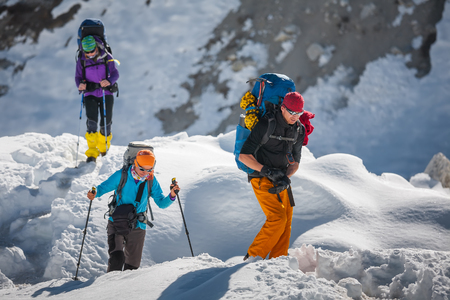Understanding Leave No Trace Principles
As the trails fill up during peak hiking season, understanding and practicing the Leave No Trace (LNT) principles becomes more essential than ever. The seven core LNT principles—plan ahead and prepare, travel and camp on durable surfaces, dispose of waste properly, leave what you find, minimize campfire impacts, respect wildlife, and be considerate of other visitors—are the backbone of responsible outdoor recreation in the United States. These guidelines are not just theoretical; they directly shape how we interact with local environments from the Appalachian Trail to national parks out West. During busy months, when foot traffic increases and ecosystems are most vulnerable, following these principles helps preserve trail quality, protects wildlife habitats, and ensures everyone can enjoy America’s public lands for generations to come. Embracing Leave No Trace is more than a checklist—its a mindset deeply rooted in U.S. outdoor etiquette, echoing a nationwide commitment to stewardship and respect for both nature and fellow hikers.
2. Water Sources and Sustainable Practices
Finding reliable water sources is a critical part of backcountry hiking, especially during peak season when both traffic and environmental impact are at their highest. Practicing Leave No Trace (LNT) principles means approaching water collection with a focus on sustainability and respect for the land. Here’s how to responsibly locate, collect, and treat water in the wild while staying within legal and ethical guidelines.
Identifying Natural Water Sources
Before you hit the trail, research maps and local ranger reports to identify streams, lakes, or springs along your route. During peak hiking season, some sources may dry up or become contaminated due to heavy use. Always plan backup options and avoid drawing from stagnant pools whenever possible.
Responsible Water Collection: Key Guidelines
| Best Practice | Why It Matters |
|---|---|
| Collect water at least 200 feet (about 70 adult steps) from trails and campsites | Reduces environmental damage and keeps water sources clean for wildlife and other hikers |
| Use only established access points if available | Minimizes erosion and protects shoreline habitats |
| Avoid disturbing aquatic plants and animals | Preserves ecosystem health and water quality |
Filtration & Treatment Tips
No matter how pristine a stream may look, always treat water before drinking. In the U.S., pathogens like Giardia and Cryptosporidium are common risks. Popular methods include:
- Pump filters: Effective for removing protozoa, bacteria, and sediment; choose models rated for viruses if traveling internationally.
- Squeeze filters: Lightweight and easy to use for solo hikers; be sure to backflush regularly.
- Chemical treatments: Iodine or chlorine dioxide tablets work well in a pinch, but note taste preferences and wait times.
- Boiling: Bring water to a rolling boil for at least one minute (three minutes above 6,500 feet).
Legal Considerations During Peak Season
Certain wilderness areas in the U.S. may have seasonal restrictions on where you can camp or collect water due to high visitor numbers or sensitive habitats. Always check with local land managers or park websites before your trip—some places require camping further from water sources during summer months to protect fragile environments. Respecting these regulations not only preserves nature but also ensures the continued enjoyment of America’s trails by future generations.
![]()
3. Minimizing Human Impact
During peak hiking season, American trails and waterways attract larger crowds, making it crucial to minimize our environmental footprint—especially around fragile lakes and streams. The Leave No Trace (LNT) principles guide us in preserving these natural spaces for future generations. Here’s how you can put these principles into action with a distinctly American approach:
Practice Responsible Trail Etiquette
Stick to established trails, even if they’re muddy or crowded. Cutting switchbacks or creating new paths may seem harmless but causes lasting erosion and damages native plant life. Yield to uphill hikers and step aside carefully on durable surfaces like rocks or gravel when passing others, rather than trampling vegetation.
Smart Camp Set-Up Near Water
Set up camp at least 200 feet away from lakes and streams—a distance recommended by the U.S. Forest Service—to protect delicate riparian zones. Use existing campsites whenever possible instead of clearing new spots. In America’s most popular parks, rangers often enforce these guidelines, so following them isn’t just courteous—it keeps you in compliance with regulations.
Manage Group Size Thoughtfully
Larger groups cause more wear and tear on trails and campsites. Keep your group size within local recommendations (often 6-8 people). If you’re organizing a bigger outing, split into smaller parties and travel separately to reduce concentrated impact.
Additional Tips for Popular Spots
Avoid washing dishes or bathing directly in lakes or streams; instead, carry water 200 feet away before cleaning up. Pack out all waste—including food scraps—and use designated toilet facilities where provided, or follow proper backcountry disposal methods if not.
Preserving America’s Wild Places
Peak hiking season is a time of connection—with nature and each other. By respecting trail etiquette, making mindful choices about camp locations, and keeping group sizes reasonable, we help ensure that stunning lakeshores and streambanks remain unspoiled for everyone who seeks adventure in the wild.
4. Proper Waste Disposal and Water Protection
Responsible hikers know that proper waste disposal is at the heart of Leave No Trace principles, especially during peak hiking season when trails are heavily trafficked. Packing out all trash—including food scraps, wrappers, and hygiene products—prevents wildlife from becoming dependent on human food and keeps natural spaces pristine. U.S. regulations such as those enforced by the National Park Service and U.S. Forest Service often require visitors to carry out everything they bring in, sometimes with specific requirements for micro-trash like bottle caps or fruit peels.
Packing Out Trash: Why It Matters
Leaving trash behind not only mars the landscape but can also introduce toxins or unnatural food sources to local ecosystems. Many American trails provide signage reminding hikers to “pack it in, pack it out,” and some popular sites now enforce fines for littering. Carrying a dedicated trash bag or even a small zip-top bag for micro-trash is a practical solution that aligns with both regulations and best practices.
Cathole Use: Human Waste Disposal
Disposing of human waste properly is essential for protecting water quality and overall trail experience. The standard guideline across U.S. public lands is to dig a cathole 6-8 inches deep at least 200 feet (about 70 adult steps) from water sources, campsites, and trails. After use, cover the cathole with native soil and disguise it with natural materials. Some areas—such as high alpine zones or desert environments—require hikers to pack out human waste using WAG bags or similar systems due to slow decomposition rates.
Quick Reference: Cathole Guidelines vs. Pack-Out Requirements
| Practice | Standard Approach | Common U.S. Regulation |
|---|---|---|
| Cathole Use | 6-8” deep, 200’ from water/trail/campsite | Permitted in most forested regions |
| Pack-Out Waste Bags | Carry out all waste (WAG bags) | Required in many alpine/desert zones |
Avoiding Water Contamination
Keeping water sources clean is a shared responsibility. Never wash dishes, bathe, or dispose of any wastewater directly into lakes, rivers, or streams. Instead, carry water 200 feet away before cleaning up, using biodegradable soap sparingly if necessary. Even naturally occurring substances like sunscreen or insect repellent can damage delicate aquatic ecosystems if introduced in large amounts.
Best Practices Checklist for Water Protection:
- Always camp at least 200 feet from water sources.
- Treat all water before drinking (filtration/boiling/chemical treatment).
- Bury or pack out all solid waste per local guidelines.
- Dispose of greywater by scattering it well away from streams or lakes.
By following these standards—and understanding both legal requirements and Leave No Trace ethics—you help ensure America’s wild places remain healthy and welcoming for generations of hikers to come.
5. Community and Stewardship
Being a responsible hiker in the U.S. means more than just following Leave No Trace principles on your own; it’s also about participating in the broader hiking community to help protect natural spaces, especially during peak hiking season when trails see their heaviest use. Stewardship is a core value for many American hikers, and there are plenty of ways to get involved. Volunteering for trail maintenance or cleanup days, organized by local hiking clubs or park authorities, is a hands-on way to give back and ensure that trails remain accessible and safe for everyone. Another important practice is reporting hazards like downed trees, eroded sections, or overflowing water sources to land managers—most parks and trail systems have easy ways to submit these reports online or via signage at trailheads. Sharing information about Leave No Trace and water management with new hikers you meet can also make a difference, creating a ripple effect of awareness in the outdoor community. Ultimately, stewardship is about fostering a sense of shared responsibility and pride in America’s wild places, making sure they’re preserved and enjoyed not only today but for generations to come.


